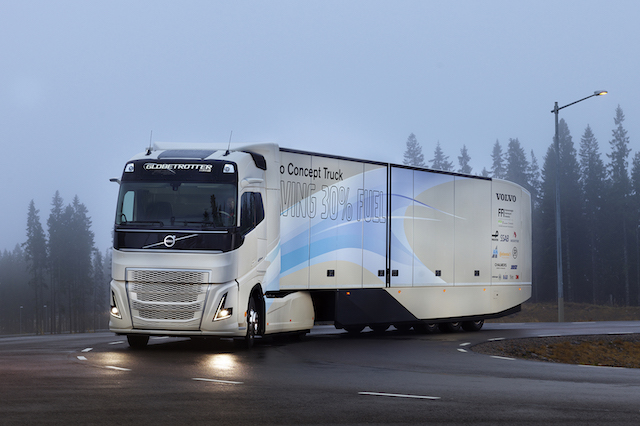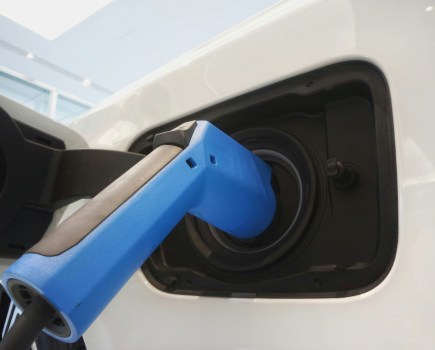 Volvo Trucks has developed its first hybrid vehicle designed for long-haul work. According to the Swedish manufacturer, in combination with the vehicle’s other improvements, the total reduction in fuel consumption and CO2 is around 30 per cent.
Volvo Trucks has developed its first hybrid vehicle designed for long-haul work. According to the Swedish manufacturer, in combination with the vehicle’s other improvements, the total reduction in fuel consumption and CO2 is around 30 per cent.
Volvo first unveiled the Volvo Concept Truck in May 2016 and reckons it has now developed and enhanced the vehicle even further. In addition to improvements in aerodynamics, rolling resistance and reduced weight, the new version features a hybrid powertrain – one of the first of its kind for heavy-duty trucks in long-haul applications.
“We strive to be at the forefront of electromobility and to constantly push the limits when it comes to reducing fuel consumption and emissions,” said Claes Nilsson, CEO at Volvo Trucks. “Over the coming years, as society moves more and more towards renewable energy, we strongly believe that electromobility and hybrid technology will become increasingly important. The powertrain in our concept truck has been developed to improve transport efficiency and thereby help the industry towards sustainable transport. With the concept truck we will gain valuable knowledge and experience, which will help us develop the technology further.”
The hybrid powertrain works by recovering energy when driving downhill on slopes steeper than one per cent, or when braking. The recovered energy is stored in the vehicle’s batteries and used to power the truck in electric mode on flat roads or low gradients. An enhanced version of Volvo’s driver support system I-See has been developed specially for the hybrid powertrain, which analyses upcoming topography to calculate the most economical and efficient choice between the diesel engine and the electric motor, as well as the optimal time to use the recovered energy.
In long-haul transportation, it is estimated the hybrid powertrain will allow the combustion engine to be shut off for up to 30 per cent of the driving time. This will save between 5-10 per cent in fuel, depending on the vehicle type or specification, and its drive cycle.
It also offers the ability to drive in full electric mode for up to 10 km, enabling the vehicle to operate with zero emissions and low noise.
“Today, long-haul transport accounts for a significant share of the total energy consumption in the transportation sector,” said Lars Mårtensson, director Environment and Innovation, Volvo Trucks. “Using hybrid technology, the potential reduction in fuel and emissions is considerable and an important step towards reaching both our and society’s environmental goals for the future.”
The Volvo Concept Truck also builds on many of the gains achieved by its predecessor – namely improved aerodynamics, rolling resistance and reduced vehicle weight.
“This is a platform for verifying several new technologies for increasing transport efficiency,” said Åke Othzén, Volvo Trucks’ chief project manager. “Some of these developments have already been introduced to our trucks, and some will be introduced in the near future. The hybrid powertrain is partly based on knowledge and experience from Volvo Buses’ hybrid and electric buses.”






